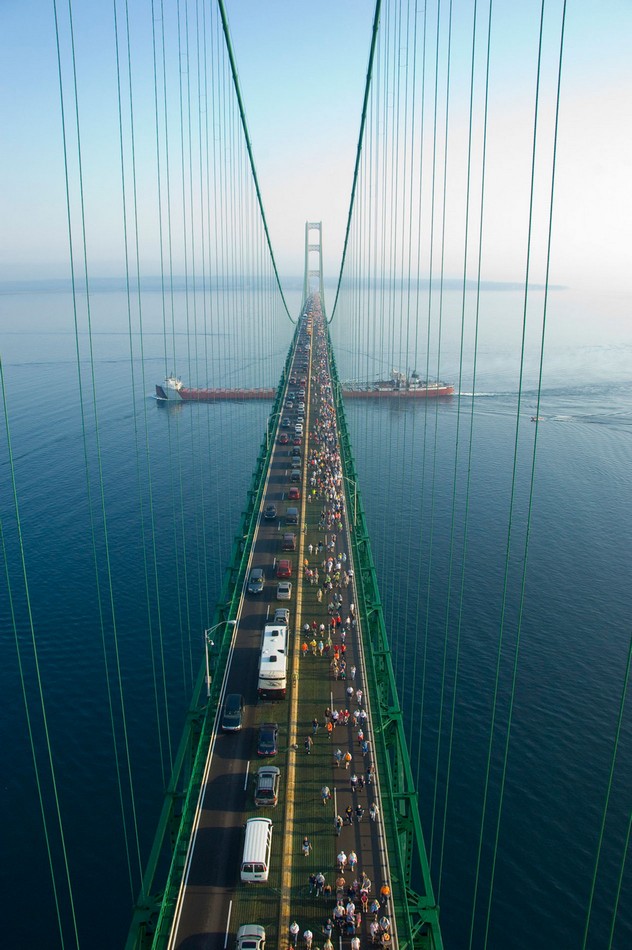
Bridge View Park view
The Mackinac Bridge is currently the seventh-longest suspension bridge in the world by total suspended length, and the longest suspension bridge in the western hemisphere. In 1998, the Akashi Kaikyo Bridge in Japan became the longest in the world, stretching 12,826 feet when measured by total suspended length.
The Mighty Mac is unique among other high-ranking suspension bridges due to its long and fully suspended side spans. It has the fourth-longest side spans in the world. Another high-ranking bridge is the 1915 Canakkale Bridge in Turkey which in 2022, became the world’s longest suspension bridge when measured by main-span length, which is 6,637 feet. Its total suspended length was still less than Akashi Kaikyo at 11,680 feet.
The total length of the Mackinac Bridge is 26,372 feet. The length of the suspension bridge (including anchorages) is 8,614 feet. The length from cable bent pier to cable bent pier is 7,400 feet. Length of main span (between towers) is 3,800 feet.

2009 Mackinac Bridge Labor Day Walk
The width of the roadway is 54 feet. The outside lanes are 12 feet wide (2), the inside lanes are 11 feet wide (2), the center mall is 2 feet wide, and the catwalk, curb and rail width is 3 feet on each side – totaling 54 feet. The stiffening truss width in the suspended span is 68 feet wide making it wider than the roadway it supports.
The height of the roadway at mid-span is approximately 200 feet above water level. The vertical clearance at normal temperature is 155 feet at the center of the main suspension span and 135 feet at the boundaries of the 3,000 ft. navigation channel.
All suspension bridges are designed to move to accommodate wind, change in temperature, and weight. It is possible that the deck at center span could move as much as 35 feet (east or west) due to high winds. This would only happen under severe wind conditions. The deck would not swing or “sway” but rather move slowly in one direction based on the force and direction of the wind. After the wind subsides, the weight of the vehicles crossing would slowly move it back into center position.
The steel superstructure will support one ton per lineal foot per roadway (northbound or southbound). The length of the steel superstructure is 19,243 feet. Each direction will, therefore, support 19,243 tons. The answer is 38,486 tons (2 x 19,243 tons).




